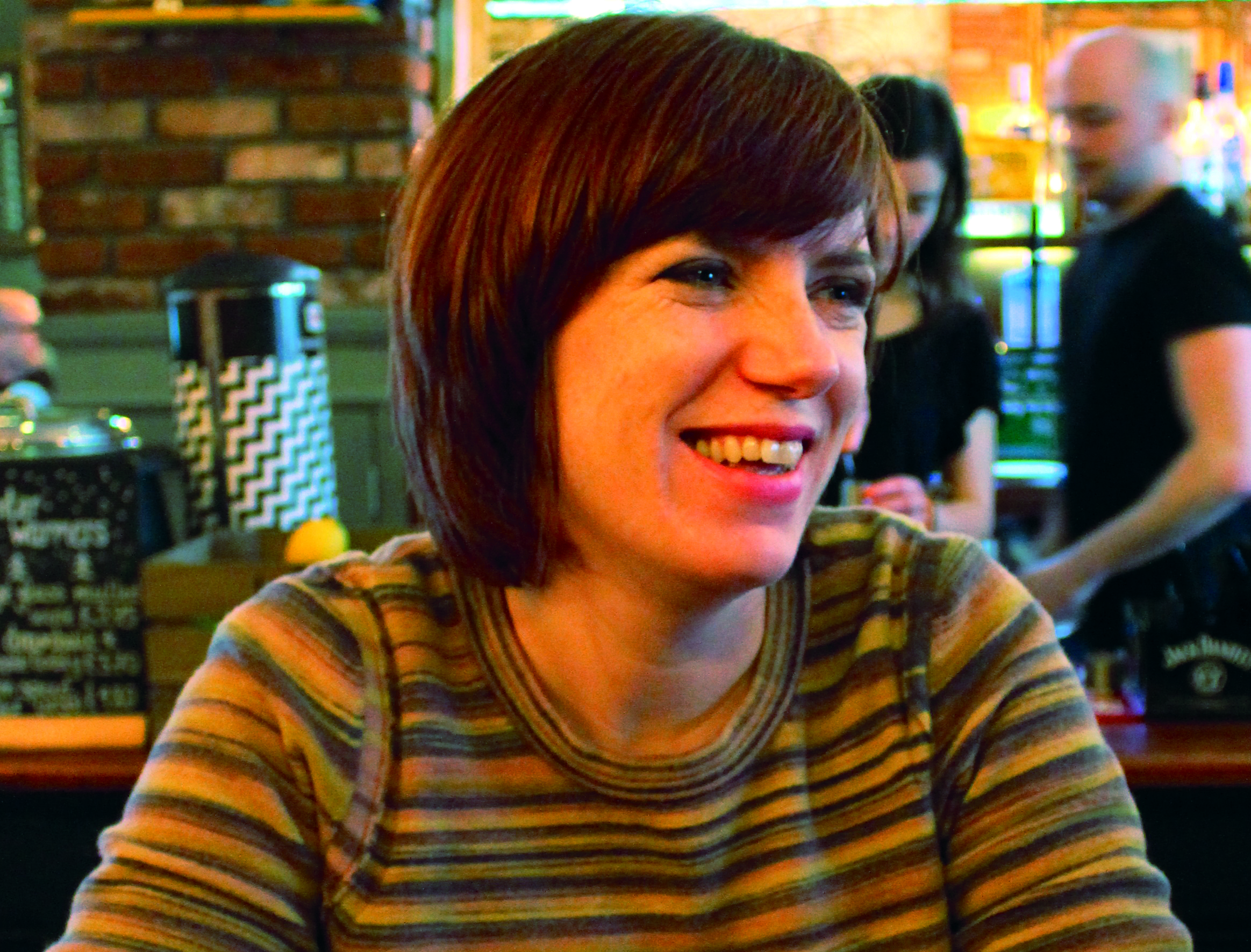They work quietly in the background, and the public mostly don’t even know they exist – but they are crucial to the functioning of our public life. Susan Smith takes a look at the state of Scotland’s Third Sector Interface network.
Jane has started to write poetry, sing in a choir and paint – a broad array of colourful, creative activities that she says have enriched her life.
After almost a decade of trying to manage a challenging mental health condition with the support of community services in Paisley, Jane believes her life turned around when she got involved in the Paisley City of Culture bid in 2016.
“All the activities and involvement helped re-spark my creativity,” she said. “And that stopped me being readmitted to hospital”.
Jane was just one of the thousands of people in Paisley who got involved in the city’s bid to be the European City of Culture 2021. It was vying to be the smallest town ever to win the accolade, and although the dream ended at the end of 2017 when it was announced the crown would go to Coventry, that doesn’t really matter to Paisley residents. The process helped regenerate pride in the town and the services it offers.
Jane participated through the STAR Project, which works with some of the Paisley’s most isolated people. People like Jane who struggle with mental health issues, families living in poverty and grappling with benefits issues, carers, older and young people at risk – it’s a rare universal service for everyone.
Sharon McAulay, manager of the STAR Project, said getting involved with the City of Culture bid helped grow the reputation of the charity, creating partnerships and opening up new opportunities and funding. She was encouraged to get involved through her local Third Sector Interface (TSI), Engage Renfrewshire.
“For us, as a very small third sector organisation, we often feel overlooked when there’s big things going on, especially with the local council,” she said. “However, I felt really valued. I was on the partnership board at the time and I remain on the legacy board. For us the thing that sticks out the most was the new partnership model – we are now a lot more respected and valued for our contribution.”
And 18 months after the bid ended it is still providing opportunities to work in partnership with the council and others.
STAR is currently working on an art project to create a community labyrinth, which as an idea began during the bid process. It is working with an artist in residence and planning to build the finished piece on land that is being transferred to community ownership from the council.
“I don’t think that would have come this far had we not been involved in the bid,” said McAulay. “I’ve also recently applied for funding, which is part of the bid legacy, for cultural organisations to develop further.
"That would enable me to bring in a consultant to work with us to become more sustainable. It’s very exciting.”
The biggest gain was the fact that it was trying to tackle the social problems we're all invested in, whether that be poverty, jobs, regeneration, wellbeing or health issues - Alan McNiven
Alan McNiven
McAulay believes Engage Renfrewshire is a particularly effective TSI because she gets so much support from it – whether it is encouraging the organisation to get involved in community development or hands-on advice about employment issues or how to fill in a particularly complex Scottish Government funding application.
Most people in Scotland won’t have the faintest idea what a TSI is, but for communities and individuals in need of community services, they are essential. Scotland’s TSIs support several thousand community organisations each – organisations that provide lifeline services to Scotland’s most vulnerable citizens.
For those that do understand the role of the TSI, the Paisley City of Culture bid may not seem like the most obvious project. But Alan McNiven of Engage Renfrewshire knew from the start that it was a massive opportunity for the third sector in the city.
“There were obvious opportunities such as the Cultural, Communities and Events Fund set up to support local organisations to deliver bits of cultural practice,” explains McNiven. “But for me, the biggest gain was the fact that it was trying to tackle the social problems we’re all invested in, whether that be poverty, jobs, regeneration, wellbeing or health issues.
“The third sector world is very much linked to these areas of needs. So I thought it was really important that we were there from the beginning to influence the direction of the bidding process. We wanted to make sure it didn’t just become a cultural opportunity but became an opportunity for real change.”
The success of the Paisley City of Culture process shows how important a TSI is to a local community, but running one isn’t an easy job – particularly during the current era of austerity. Funding for TSIs themselves has remained at a standstill since 2011, while funding for community groups has never been tighter.
The TSI network has also had a tough few years itself – a Scottish Government evaluation published in January 2017 highlighted issues with poor governance, questioned how well some are working together and with partners locally, and highlighted a broad disparity in the level of service on offer across Scotland.
This suggested a postcode lottery for community groups looking for support to grow and develop their organisation. And 12 months later, in early 2018, it led to the dissolution of support body Voluntary Action Scotland (VAS). Support for the network shifted directly to its main funder – the Scottish Government.
What is a TSI anyway?
Third Sector Interfaces exist in all of Scotland’s local authority areas with some stretching back to the birth of the third sector itself in the 19th Century – Edinburgh Voluntary Organisations Council (Evoc) celebrated its 150th birthday last year.
Others are more recent. In 2011, the Scottish Government decided to stop funding the individual Councils for Voluntary Service, Volunteer Centres and Social Enterprise support bodies and merge them into 32 Third Sector Interfaces.
At that point 22 TSIs merged into single bodies and 10 set up partnership structures.
While the purpose of the TSI seems simple – to support the third sector at a local level – in reality they play a key strategic role in the complex world of community planning.
Quietly working away in communities, TSIs are vital to effective public service reform. Their role is central to recent developments in community empowerment, health and social care integration, the upcoming Local Governance Review and the creation of Public Health Scotland.
More generally, they are an essential local partner in helping the Scottish Government achieve the holistic vision of a healthy and happy Scotland outlined in its new National Performance Framework.
So, what can community organisations expect from their TSI? The new Scottish Government Outcomes Framework for TSIs identifies the following priority areas:
Voice – ensuring a strong third sector voice at a strategic level within local planning structures and nationally.
Build capacity – developing the capacity of volunteering, community groups, voluntary organisations and social enterprise to achieve positive change.
Connect – providing leadership, vision and coordination to the local third sector to better respond to local priorities, including through partnership and collaboration.
This new open approach is designed to help ensure community groups get a coherent service from their TSI while also enabling TSIs to respond to local needs, which can vary widely from Glasgow to the Moray. So, in reality there’s still a broad range of different services on offer, but the simplest way to find out how your TSI can help, is to get in touch.
A full list of TSIs is still available on the VAS website at vascotland.org/find-your-tsi.
Despite the challenges facing our sector, there are opportunities for community-based, community-led organisations to take forward initiatives that give communities more control over the things that matter to them - Fabio Villani
Fabio Villani
Earlier this month the TSIs met together for their first conference since VAS folded, organised by the Scottish Government. The mood was mixed.
It wasn’t surprising that warm words from cabinet secretary for communities and local government Aileen Campbell and Convention of Scottish Local Authorities (Cosla) vice-president Graham Houston to open the conference were welcomed by some but met with scepticism by others.
Fabio Villani, of TSI Moray, said: “Despite the challenges facing our sector, there are opportunities for community-based, community-led organisations to take forward initiatives that give communities more control over the things that matter to them.
“TSIs are ready to lead the change that is needed in the relationship between citizens and state, facilitating partnership and collaborative working.
“This came through strongly from all the speakers at our annual conference, including cabinet secretary Aileen Campbell.
“There’s never been a better opportunity to transform the relationship between citizens and state – the community sector, and the TSIs within it, are ready for the challenge!”
However, Helen Macneil from Glasgow Council for the Voluntary Sector received a round of applause for highlighting her concern that despite local and national government recognising the role of the third sector in strategy, there is no more support for communities to help them thrive.
Writing in TFN after the conference, she said: “I’ve worked in leadership in the Scottish third sector for nearly 30 years, and this is definitely the financially toughest operating environment we’ve ever faced at community level.
“I find it really very puzzling how little conversation, analysis and coverage there is about this issue, given how many organisations seem to be hanging on by their fingertips. Is it exhaustion or resignation, or amazing tenacity that leads most staff and boards to suffer in silence, and just continue coping from month to month and year to year as best they can, in the hope of surviving?” (read Macneil’s full opinion piece on page 22).
Culture change was a key theme of conversations at the conference. While everyone was agreed about the importance of shifting more power to people and communities, TSI staff aren’t seeing that happen fast enough. Investment in preventative community services will only happen if councils, health boards and other stakeholders stopped viewing the third sector as a cheap option – or additional luxury.
There were no clear answers on how to change the public sector-focused culture, although there was a kickback from TSIs to the Scottish Government on language. The third sector is at the front-line of community health and wellbeing, Jennifer Kerr from CVS Falkirk said – and the Scottish Government should stop referring to it as a stakeholder or contributor to the public health agenda.
As there are no current plans to replace VAS with another national umbrella body, its demise is creating a new fund, which the cabinet secretary announced will receive match funding from the Robertson Trust. The details are scant so far but it’s thought it might be a few hundred thousand pounds and focus on supporting training and organisational development.
In the meantime, the Scottish Government has created a new Outcomes Framework that aims to recognise the diversity of the sector, empower individual TSIs and encourage them to focus on improvements.
The framework is looser than the old, more prescriptive Common Services Framework that existed under VAS. But is it working? In Forth Valley, it seems to have led to a new era of local coproduction. Earlier this year, Forth Valley had its own mini third sector conference, which brought together organisations working in Falkirk, Clackmannanshire, and Stirling as well as colleagues from neighbouring areas.
The organisations have also worked together to create a local Social Enterprise Network and are now running a Community Accounting CIC in conjunction with CVS Inverclyde.
“We welcome the new TSI Outcomes framework which was co-produced with TSI chief officers and latterly with Evaluation Support Scotland to more closely match the local needs of our communities” said Anthea Coulter of Clackmannanshire TSI.
It was clear at the conference though that the issue of whether VAS should be replaced still splits the network.
Ella Simpson, of Edinburgh Voluntary Organisations Council (Evoc), said: “The new outcomes framework does take TSIs away from the old task and numbers reporting and will enable us to demonstrate the huge difference we make at a local level.
“The loss of an organisation which enables a collective national voice is a huge gap and as TSIs we have been discussing how we can collaborate to ensure that there is explicit, robust and trusted routes to bring our collective expertise and knowledge to the national strategic discussions.”
All things considered, there is a genuine mood of optimism in the TSI sector despite the challenges. An air of professionalism and commitment to meeting the needs of local communities sees people echoing Simpson in their determination to work together to find ways to solve problems locally and nationally. The day before the conference the TSI chief officers network met in Edinburgh to share knowledge.
And importantly across the country, community organisations struggling to stay afloat in the age of austerity are singing the praises of their TSI.
Queensferry Churches Care in the Community (QCCC) in South Queensferry has just won three-year funding from the local Health and Social Care Integrated Joint Board (IJB).
Its main function is to run a day care service for older people, but this additional funding means it can expand its supper club for people with dementia and their carers from twice a month to once a week. It has also grown its volunteer hub, which links local volunteers with opportunities to support older people in the community through activities like gardening and driving people to hospital.
Manager Liz McIntosh said: “We’ve been able to develop new services and grow as an organisations because of the support we’ve received from Evoc.
“We were one of the lucky ones that got funding from the IJB recently to develop our services over the next three years.
"We’ve had a standstill budget for the last few years, so we’ve not been able to develop, so this is huge. It’s a great way forward.”









